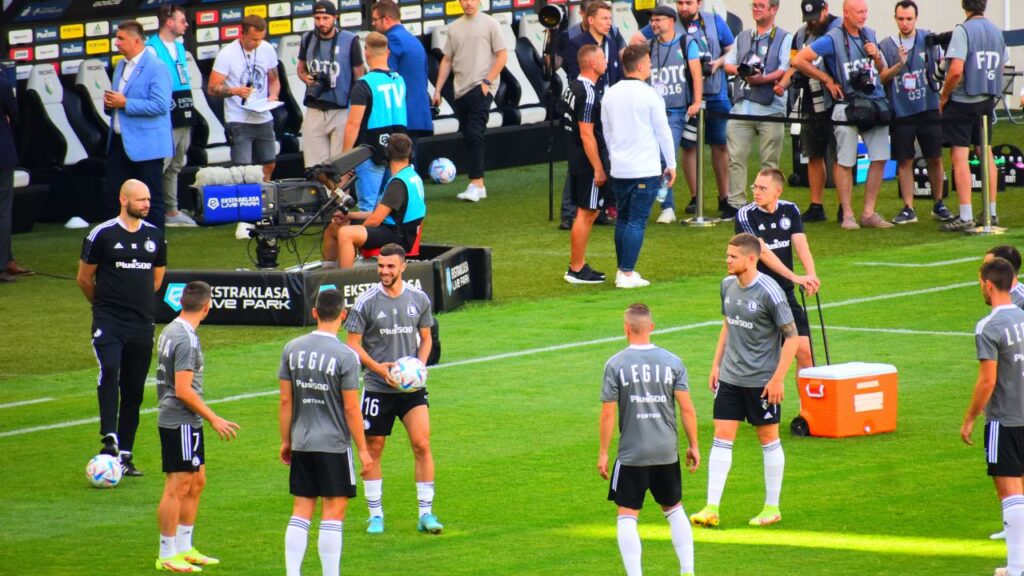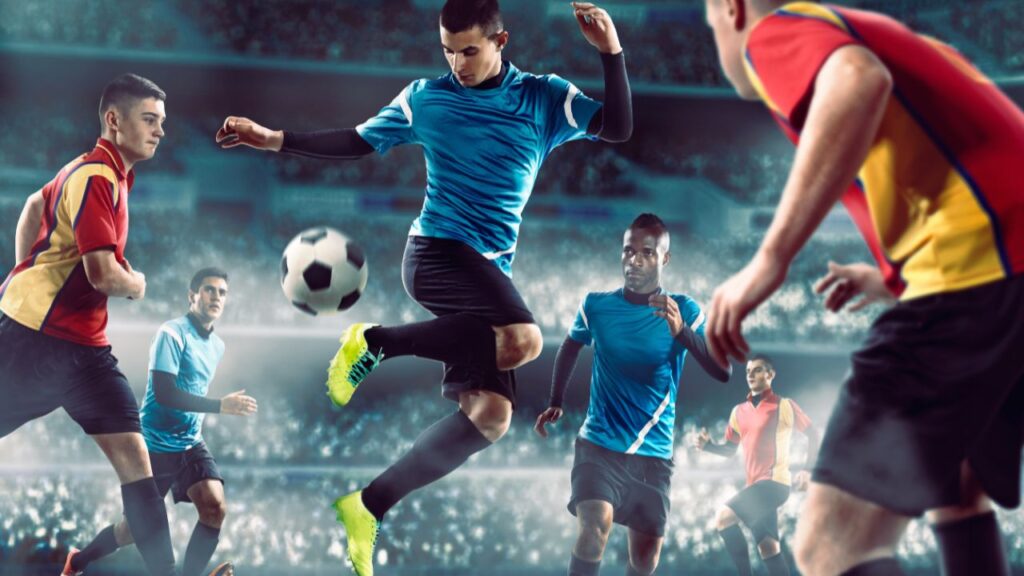From the deafening roar after a last-minute goal to the simmering tension before the kickoff of a long-anticipated derby, sports rivalries pulse at the very heart of athletic competition. These fierce battles ignite passions, fuel dreams, and often transcend the boundaries of the playing field. Rivalries are not mere contests; they are complex tapestries woven with history, culture, pride, and raw emotion. Across continents and sports, from the pitch battles of football to the courts of basketball, rivalries encapsulate the timeless struggle between heroes and underdogs, neighbors and strangers, ideologies and identities. In 2025, the power of these rivalries continues to shape not only the trophies and stats but the souls of sports themselves.
This journey explores the essence of rivalries that have transformed everyday matches into legendary encounters. Whether it’s the age-old tug of war between the Boston Red Sox and New York Yankees, the political undertones beneath El Clásico’s fiery atmosphere, or the electric energy coursing through college basketball showdowns, every rivalry tells a story far greater than just a scoreboard. Fans clad in Nike or Adidas gear become actors in this drama, while players adorned in Puma or Under Armour channel science, sweat, and passion for glory. Rivalries are also social mirrors, reflecting divisions and unity alike, carrying the echoes of historical conflicts or regional identities into stadiums packed with hopefuls.
Delving into the psychology behind why fans care so deeply, the role of social media in amplifying these competitive fires, and the enduring legacy players leave on and off the field, this article peels back the layers of sports rivalries shaping the sporting world. These are the battlegrounds not only where champions are crowned but where communities bond and stories immortalize. Step into the arena of competition, and you’ll find rivalry is the lifeblood of sports’ soul.

How Sports Rivalries Foster Passion and Define Athletic Legacy
Every sporting rivalry pulses with a unique brand of passion that boosts athletes’ performances and electrifies fans. Rivalries are the secret sauce that transforms normal contests into epic battles, pushing players beyond limits and creating some of the most unforgettable moments in sports history.
Passion isn’t just a buzzword in these clashes; it’s an inferno stoked by decades, sometimes centuries, of competition and emotion. Take the NBA’s legendary Lakers vs. Celtics rivalry, renewed in 2024 with all-time reunion matchups, where every dunk and defensive stop carried the weight of history. The energy from 25 million viewers watching the 1984 Game 7 still reverberates through arenas today. These moments incarnate the soul of competition.
Why do rivalries ignite such fierce devotion? Proximity and shared history often lay the foundations. Local rivalries foster a “battle for the backyard,” where bragging rights and pride are at stake. The Boston Red Sox and New York Yankees rivalry began in the early 1900s partly due to geographical closeness and competitive ambition. Over time, it morphed into a cultural phenomenon showcasing not just sport but the identity of two cities.
Elements fueling rivalry passion include:
- Historical Grudges: Long tales of past defeat or controversy keep the competitive fire alive.
- Cultural Differentiation: Teams embody regional or ideological identities, magnifying the contest’s significance.
- Player and Coach Personalities: Clashes between key figures can heighten drama, as seen with legendary coach matchups like Dean Smith vs. Mike Krzyzewski in college basketball.
- Fan Participation: Rituals like chants, tailgating, and symbolic colors create a communal experience.
Here’s a snapshot table showcasing iconic rivalries and what keeps them burning in the hearts of fans:
| Rivalry | Key Factors | Sports | Lasting Impact |
|---|---|---|---|
| Boston Red Sox vs. New York Yankees | Geographic proximity, historic heartbreaks, cultural identity | Baseball | Cemented Boston’s underdog image; Yankees’ quest for dominance |
| El Clásico (FC Barcelona vs. Real Madrid) | Political symbolism, regional pride, global fanbase | Football (Soccer) | Symbol of Catalan identity; pivotal moments defining Spanish football |
| Ohio State vs. Michigan | School pride, historic games, alumni passion | College Football | Massive fan engagement; influence on coaching legacies |
| Lakers vs. Celtics | Championship battles, star power, legacy-defining games | Basketball | Shaped NBA’s growth; enduring debates on player greatness |
Rivalries do more than elevate adrenaline; they build legacies. Players like those celebrated in the Hall of Fame become immortalized not just for skill but for their role in these epic confrontations. The rise of brands like Nike or Adidas sponsoring fierce matchups only amplifies visibility, with every kit change or signature move reverberating globally. Rivalries push athletes to cement their names in history through commitment and grit.
Fan Fervor: The Emotional Engine Behind Rivalries
Fans are the heartbeats of rivalries, fueling emotion through chants, colors, and unwavering loyalty. The psychology of “us vs. them” transforms watching into a personal experience. Take the US versus USSR Cold War sports contests—victories were perceived as ideological wins, not just games.
- Rivalries unite communities but also spotlight divisions.
- They spur traditions that become cultural landmarks around game days.
- Social media now ignites real-time banter, extending rivalries online with debates and memes.
Explore more on the fusion of fan culture and rivalry impact at football fandom.
Global Impact of International Sports Rivalries Beyond the Game
Sports rivalries transcend the stadium and often weave into the sociopolitical fabric of nations. The competition between the United States and Soviet Union during the Cold War was more than about medals—it reflected an intense ideological clash. The “Miracle on Ice” at the 1980 Winter Olympics became a symbolic blow in that tension, fueling a national identity and pride unparalleled in sports history.
International rivalries like India vs. Pakistan in cricket carry historical baggage that electrifies audiences. The clashes are not just athletic contests; they echo political and cultural narratives fraught with decades of tension.
International rivalries highlight several key roles:
- Symbolism: Representing wider cultural or political struggles.
- Diplomatic Channels: Sometimes easing political tensions through sportsmanship.
- Economic Impacts: Huge broadcast deals, tourism boosts, and merchandising worldwide.
- Global Fanship: These matchups attract millions watching online, with social media intensifying live interaction.
The table below compares major international rivalries and their societal impact:
| Rivalry | Political/Historical Background | Sports | Global Reach & Impact |
|---|---|---|---|
| USA vs. USSR | Cold War ideological battle | Ice Hockey, Basketball | Inspired massive viewership; symbol of freedom vs control |
| India vs. Pakistan | Partition and ongoing political tension | Cricket | Millions worldwide; peak TV ratings; deep emotional charge |
| Brazil vs. Argentina | South American football supremacy | Football (Soccer) | Global social media buzz; key continental trophies at stake |
| England vs. Australia | Historical rivalry and colonial ties | Cricket (The Ashes) | One of cricket’s oldest rivalries; intense fan banter |
The ripple effect of these rivalries often transcends sport. For instance, soft diplomacy sometimes plays a role when athletes from rival nations show mutual respect, as during the Olympic Games, fostering moments of peace amidst competitive fire. Fans and players clad in top brands like Reebok, New Balance, or Asics bring astounding athleticism, turning these games into global festivals admired far beyond their original borders.
The Role of College and Community in Forging Legendary Sports Rivalries
College sports hold a distinctive place in the rivalry narrative, especially in the United States where athletic rivalries often define school identity and local pride. Historic clashes like Ohio State versus Michigan in American football or Duke versus North Carolina in basketball encapsulate more than just a game—they’re about legacy, bragging rights, and alumni loyalty.
Community identity is woven tightly into these rivalries. Entire cities and university communities come alive during game day, dressing in champion gear from brands such as Champion, Umbro, or Fila to showcase pride. The atmosphere goes beyond competition—it’s a full cultural immersion where generations share rituals, stories, and cheers.
Why College Rivalries Matter:
- Cultural Continuity: Alumni and families pass down traditions that grow with every generation.
- Economic Boost: Local businesses thrive around rivalry game days due to increased tourism and fan spending.
- Recruitment Impact: Success in rivalries can sway athlete signings and program prestige.
- Student Engagement: Fosters community spirit, including participation in chants, tailgate parties, and pre-game rituals.
Table displaying key U.S. college sports rivalries and their characteristics:
| Rivalry | Sport | Main Drivers | Community & Economic Impact |
|---|---|---|---|
| Ohio State vs. Michigan | Football | State pride, historic competition | Significant local economic spikes, vibrant fan communities |
| Duke vs. North Carolina | Basketball | Academic rivalry, star players | National attention, recruitment influence |
| Texas vs. Oklahoma (Red River Showdown) | Football | Regional identity, historic tensions | Huge fan turnout, large economic injections |
These rivalries play out as epic stories year after year, and as fans swap between Puma or Under Armour jerseys, the fever only intensifies. The legacies of players who excel in these games often grow larger than life, etched into both local lore and sports history. To understand the ins and outs of these monumental matchups, dive into comprehensive guides like Understanding the Game and follow thrilling live updates with detailed match reports.
Modern Rivalries: How Technology and Social Media Amplify the Competitive Fire

The digital arena now mirrors the fierce battles on the field. Social media platforms have become an integral part of modern rivalries, transforming heated exchanges into global phenomena. Athletes, teams, and fans engage in real-time banter, memes, and debates on Twitter, Instagram, and TikTok, extending the passion far beyond stadium walls.
Star players from Manchester United and Liverpool, or global icons like Messi and Mbappé, are frequently at the center of online firestorms. The rise of influencer culture means every moment — from a stunning goal to a tactical foul — invites immediate scrutiny and reactions, turning matches into 24/7 events.
Impact of social media on rivalries includes:
- Instant Global Engagement: Fans worldwide connect and contest opinions live.
- Amplification of Drama: Viral clips and humorous memes add flair and tension.
- Player and Team Branding: Social media boosts visibility, attracting sponsorships from major brands like Nike, Reebok, and New Balance.
- Poor Sportsmanship Risks: Online hostility and trolling require careful moderation to protect sportsmanship.
The table below illustrates stats on social media engagement during recent key rivalry events in various sports:
| Rivalry | Platform | Peak Engagement (Millions) | Notable Event |
|---|---|---|---|
| Manchester United vs. Liverpool | 12.5 | Critical Premier League clash, 2024 | |
| Real Madrid vs. FC Barcelona | 15.8 | El Clásico 2023 drama | |
| LeBron James vs. Kevin Durant | 8.7 | Playoff series finals debate | |
| India vs. Pakistan (Cricket) | 18.1 | World Cup encounter |
For fans looking to dive deeper into the balance between raw emotion and tactical analysis behind the scenes, resources such as Tactics & Stats offer solid insight into how rivalries influence gameplay. Meanwhile, stories and features capture the spirit and personal narratives that fuel these battles.


